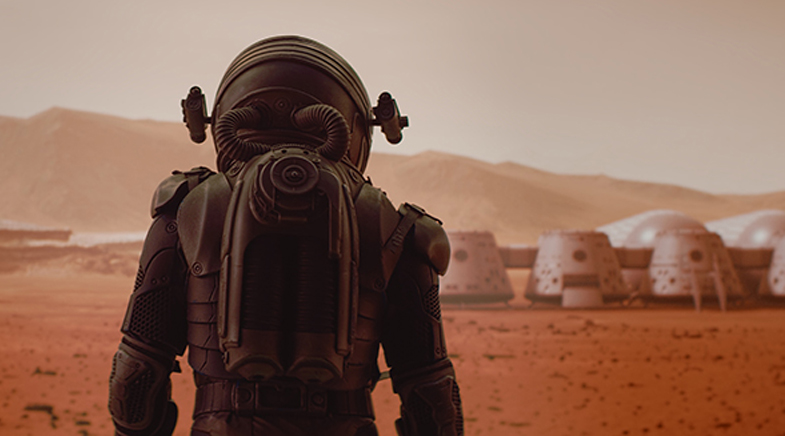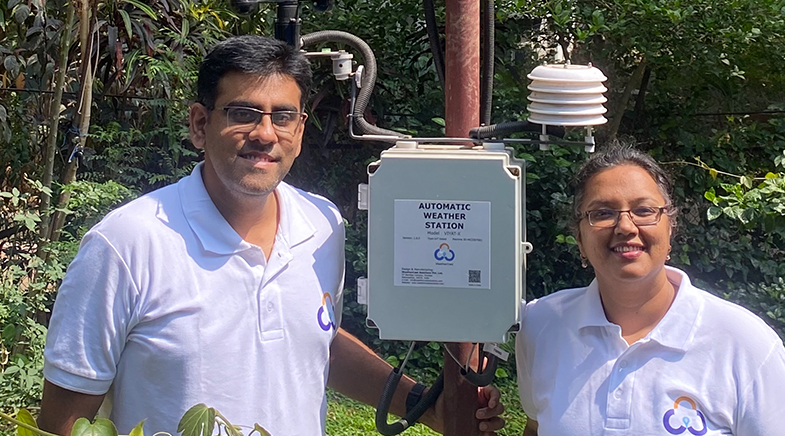This 'living ink' is out of this world!
-
- from Shaastra :: vol 01 issue 01 :: Jan - Feb 2022

If people are to live on the Moon or on Mars one day, how will we create dwellings and workplaces for them? One considered option is 3D printing habitats. But carrying Earth-derived materials to extra-terrestrial locations will be prohibitively expensive.
Biology, however, could offer a solution. A team of U.S. researchers, including some with India connections, has found a way to print 3D material with functional and programmable attributes in a proof-of-concept study that was published in Nature Communications journal in late November 2021.
The researchers, led by Neel Joshi, Associate Professor of Chemistry and Chemical Biology at Northeastern University in Boston, produced an advanced microbial ink from the bacterium Escherichia coli, which had been genetically engineered to produce nanofibres. These fibres can be concentrated and printed into 3D structures.
The natural building block that the scientists are taking advantage of is a protein produced by the bacterium. The material, called Curli fibres, is created by the bacterial cells as they attach themselves to a surface and to one another to form a community. The same properties that make the Curli fibre a sort of glue for the bacteria also present it as an attractive material for microbial engineers such as Joshi and his colleagues.
That microbial ink is yet to be tested on a cosmic scale, but the scientists have used the gelatinous material to print small shapes, such as circles, squares and cones.
They also combined the ink with other genetically engineered microbes that have been designed to perform specific tasks. For instance, the scientists were able to use the gel to produce a material that secreted the anti-cancer drug azurin in response to chemical stimulus and also designed a material that could sequester the toxic chemical bisphenol A when it was present in the environment.
Creating a printable ink directly from microbes, without the addition of any other polymers or additives, opens up new possibilities for manufacturing in settings where conventional materials may not be available. It also enables the development of materials that can sense and respond to the environment around them. Being able to 3D print these materials could allow for customisation and adaptation to specific applications. Microbial inks, which are composed of living cells, are a potential medium for this; however, they need to combine desirable material properties with cell viability.
One of the perks of a truly living material is that it is alive. That means it can do what a living thing can do, such as heal itself, the way skin does.
"Our microbial ink is the world's first bioink produced entirely from engineered microbes. Secondly, the microbial ink showed good printability, structural integrity and print fidelity," noted Avinash Manjula-Basavanna, a postdoctoral fellow in Joshi's laboratory and co-lead author of the study.
Joshi compared it to a tree that has cells embedded within it, which goes "from a seed to a tree by assimilating resources from its surroundings in order to enact these structure-building programs". He said in a statement, "... what we want to do is a similar thing, but where we provide those programs in the form of DNA that we write and genetic engineering."
Manjula-Basavanna, who did his PhD at the Jawaharlal Nehru Centre for Advanced Scientific Research in Bengaluru, also stated that microbial ink could help in the better understanding of microbiomes and tissue engineering applications. It could also be utilised for building structural living materials on Earth or in space.
Microbes have been used to make the ink for 3D printing before, but what sets this microbial ink apart is that it is not blended with anything else, said the scientists, adding that their gel was entirely biological.
One of the perks of a truly living material is that it is, in fact, alive, Manjula-Basavanna said. And that means that it can do what a living thing can do, such as heal itself, the way skin does. In the right conditions, the cell in the microbial gel could simply make more of itself.
Have a
story idea?
Tell us.
Do you have a recent research paper or an idea for a science/technology-themed article that you'd like to tell us about?
GET IN TOUCH














